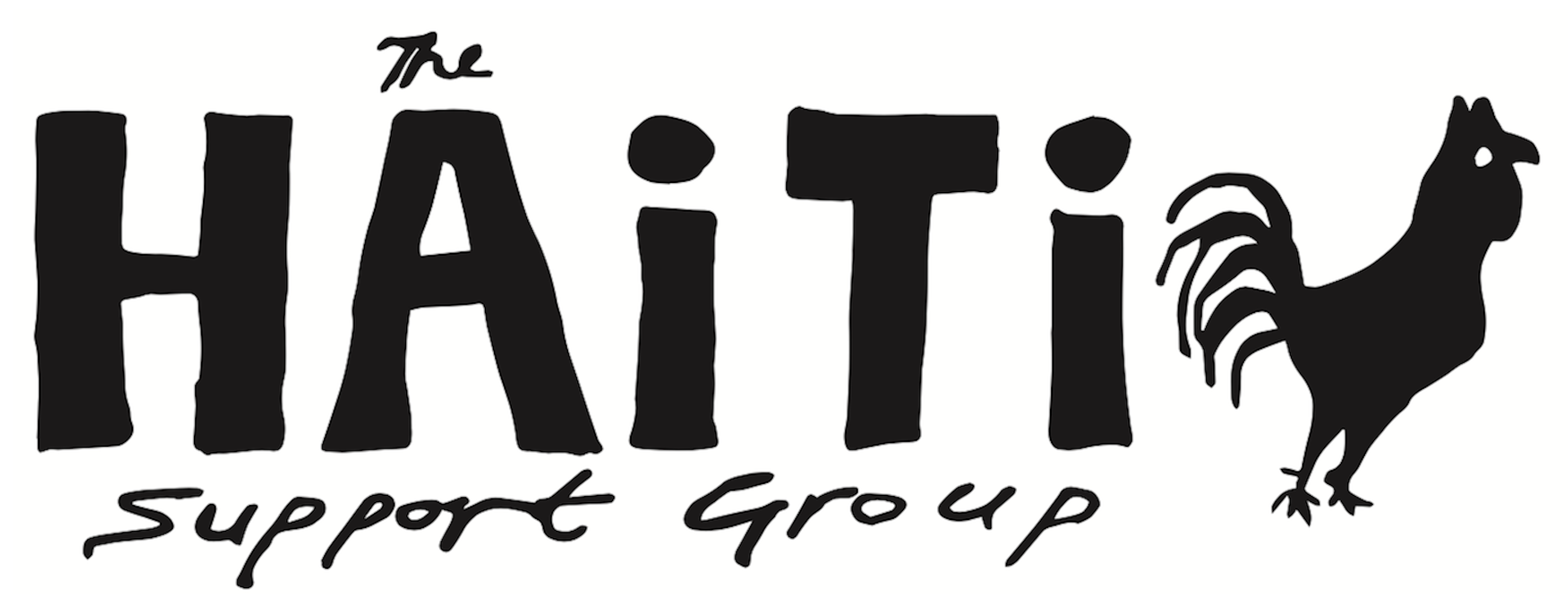One Haitian dollar… One Man’s Total Worldly Wealth. 26 January 2010
It was a searing image on a day when world leaders gathered in Montreal to discuss the future of Haiti. Thousands of people lining up for food on a plaza in front of the country’s Presidential Palace, once a symbol of authority and now a crumbling, empty shell. Watching over them was a contingent of United Nations soldiers from Uruguay standing behind razor wire and carrying riot shields, truncheons, automatic weapons and tear-gas guns.
At first the crowd was orderly, neatly arranging itself into three lines that stretched far down the street. Mothers carrying babies stood next to young boys smiling and old men barely able to stand up. “We don’t have any food,” said Elien Jean Ronald, who was hoping to get a bag of rice for his wife and two children. He dug into his pocket and pulled out one Haitian dollar, his total worldly wealth. “It’s absurd,” he said, shaking his head.
Cheers went up as several trucks arrived, loaded with rice, beans and cooking oil from the UN World Food Program. But the cheerful mood didn’t last long. Soon the lines began to fray and the crowd pushed forward. The soldiers fired blanks into the air and pushed back with their riot shields, prompting those stuck in the middle to scream and lunge out of line. As one young man ran to the bags of rice and beans from the sidewalk, he was tackled by a soldier and hauled to the ground. Others were grabbed and shoved away. Finally the lines broke completely and hundreds of people stormed forward, ransacking a truck full of crates of cooking oil. The soldiers gave up, pulled up their razor wire and drove off in a convoy of trucks. As they left, some of the men gestured angrily while others scraped grains of rice off the street and filled their pockets.
“It’s good for the soldiers, not for us,” said Felice Fedlenne as she stood near the empty boxes of cooking oil holding her one-year-old son. Like most of the people in the plaza, Ms. Fedlenne got nothing. As the crowd dispersed, many walked across the street to the Champ de Mars park, which has become a makeshift refugee camp overflowing with thousands of skimpy shelters made from blankets, sticks and corrugated metal. Some are covered in Bible passages while others are little more than plastic tarps tied to trees. No one knows how long they will be here, or in the multitude of other similar camps that have sprung up across the city. But the living conditions are becoming a serious concern. Food is scarce and what is available is too expensive for most. Water is also limited and the air reeks of urine.
The government has announced plans to create temporary tent cities in three locations outside the capital. But in one designated area, along the Route de Tabarre, no one had even heard of the plans and even those in line for food outside the Presidential Palace questioned the government’s ability to pull it off. Fear of disease is also growing daily. “They are late doing this. They need 20 tent cities,” said Bill Lois, a doctor from New York who is working with a medical team in a temporary clinic based in what used to be an amusement park. “We have already had two cases of dysentery,” he said, adding that cholera can’t be far behind. “If we had a massive rain storm today, we would have cholera within a week,” he said. Dr. Lois added that in a natural disaster, cholera is often responsible for the largest number of deaths. He said the government should have moved more quickly because it will soon become harder to move people. Many at the Champ de Mars appear to be moving in for good, erecting small wooden frames covered with corrugated metal or cardboard. Persuading them to pick up and move will be a challenge.
So far the weather has been hot and dry. But many Haitians are beginning to worry about May, when the rainy season starts. One solution is tents, and the government has been asking the international community for them. Some are popping up in the various camps and on the streets. But street vendors are demanding $100 Haitian (about $3 Canadian) for them, far beyond the reach of most Haitians.
Not everyone is convinced tents in the city will work in any case. “Everyone is sending tents, but most of the squares, churchyards and vacant lots where people have taken refuge are not big enough to set up more than tiny tents,” said Mark Fried, a spokesman for Oxfam. The organization is urging the government to get people back into their homes as quickly as possible and to use tent cities as a temporary, voluntary solution. Dr. Lois agrees and says any tent city has to also have food, water and toilet facilities, otherwise it will just become another ghetto. But for those gathered in the Champ de Mars under a statue of Haitian hero Toussaint Louverture, talk of tents, food and water is largely abstract. “All help is good,” said Desilus Enoy. “We need something.” (Globe and Mail)


